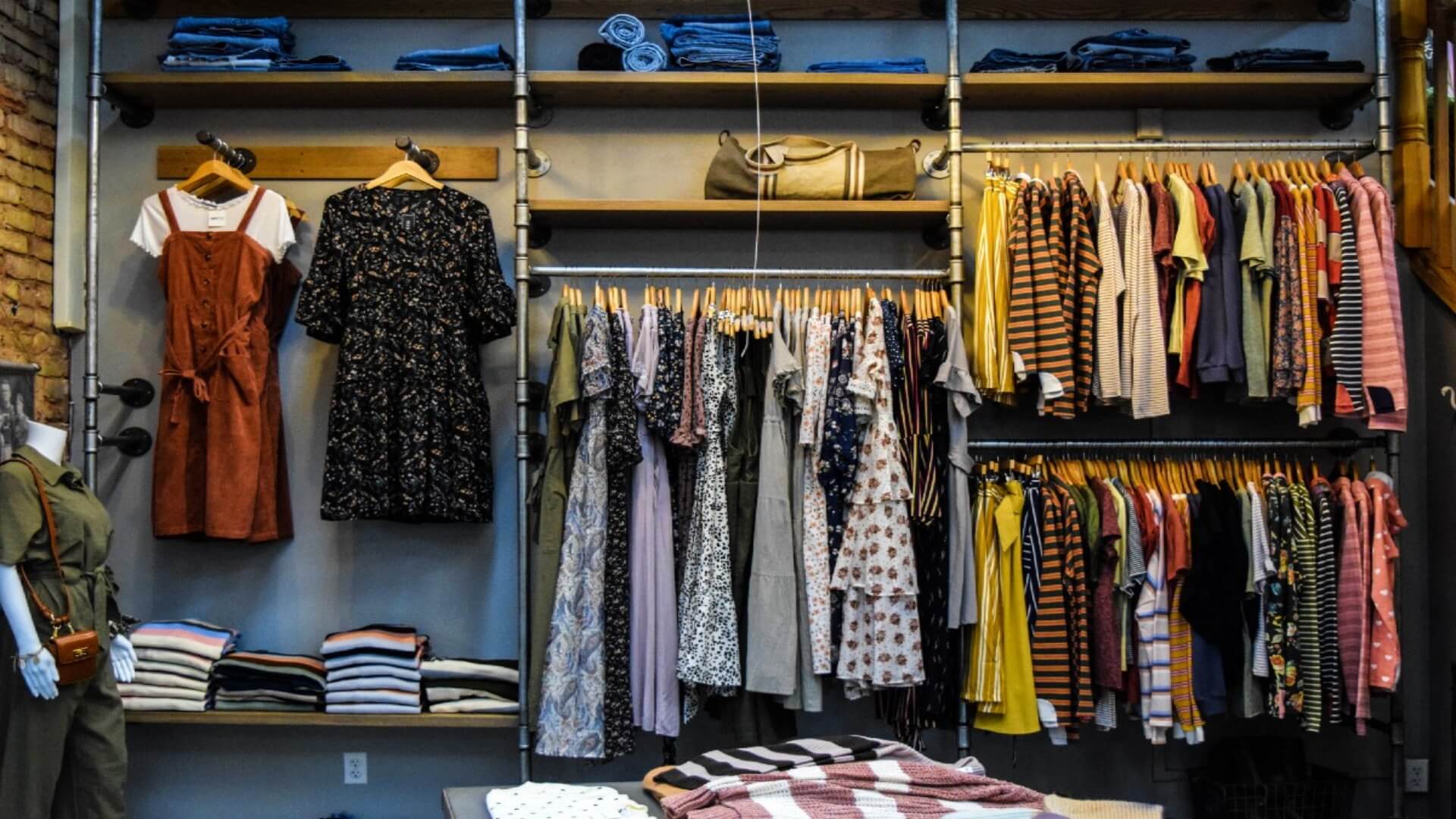Business-friendly policies, and the transition to greater use of e-commerce and on-demand production, are key to helping Asia’s small and medium-sized fashion companies bounce back from the pandemic.
The fashion industry employs millions worldwide, from artists and models to dressmakers, merchandisers, and many more. However, it has also been deeply impacted by the COVID-19 pandemic as the majority of the work in the sector is carried out by small and medium-sized enterprises (SMEs).
Although SMEs hold the largest proportion of the market in developing economies, they tend to have limited reliable safety nets and make little to no net revenue in their first 4–6 months of business. Many are also not fully prepared for digitalisation, which can create a communication gap between consumers and producers.
These combined factors pose serious risk for the labour force that relies on the clothing industry in Asian countries such as the People’s Republic of China and Bangladesh, the world’s leading clothing producers. Ready-to-wear apparel comprised 84% of Bangladesh’s total exports in 2019, highlighting the economy’s vulnerability to a deterioration in manufacturing. According to the Bangladesh Garment Manufacturers and Exporters Association, the country suffered over $3 billion in losses from order cancellations and suspensions in 2020 alone, impacting the livelihoods of 2.28 million workers and leaving 4.1 million fashion-related workers unemployed.
A study conducted by Penn State’s Center for Global Workers also found that more than 72% of original purchasers declined making the full payments for raw materials (such as cloth) that were already bought by producers.
Fashion merchandise vendors and supply chains have also suffered, especially within the luxury fashion industry, which lost around $43 billion worldwide in 2021, and the figure could be even higher when accounting for minor brands. The Milan and Paris Fashion Weeks lost revenue when Chinese fashion houses were unable to attend due to the pandemic restrictions in 2020. Despite these circumstances, big fashion names began taking new approaches by utilising digitalisation—Shanghai Fashion Week pioneered a fully digital experience, and the same approach was followed at London Fashion Week.
However, this new reliance on digitalization has led to the emergence of a wide digital gap due to the lack of digitalisation among SME brands. By April 2020, daily visitors to 100 major fashion brands in Europe collectively increased by 45% through the online platform, creating opportunities to cut advertising and other publicity.
But while most major brands have websites, most smaller ones do not. On average, new companies commence online commerce within 10–15 weeks, but it generally takes longer for SMEs in the fashion industry to expand their businesses online. This reality indicates the need to bridge the digital gap and promote mass digitization, especially in Asia.
E-commerce and on-demand production can be effective post-COVID-19 strategies for the fashion industry.
Recent data shows sharp increases in time spent by SMEs sending emails, using social media, and online shopping during the pandemic. This indicates the need for governments to support fashion SMEs in dealing with these changes and increased online commerce.
Governments in Asia should consider conducting capacity-building programs to help fashion SMEs establish an online presence, provide financial help for brands to speed up online logistics, and create a community where SMEs can collaborate.
Fashion brands can start adopting online platforms to engage with their current consumers and expand their customer base even if they are not currently online. Sending consumers relevant notifications or emails, adjusting their content using personalized algorithms, and constantly improving their services by listening to customers’ feedback can be vital tools for keeping businesses afloat.
Across the United States, Europe, and the People’s Republic of China, online shopping has continued to maintain a relatively high percentage since 2019. To improve sales volumes, fashion companies can combine the digital approach with greater human interaction to increase access by customers.
For example, in 2020, several Chinese fashion brands sent their customers QR codes that would connect them with sales representatives on the phone, mimicking offline shopping experiences. Similarly, in Latin America, companies used WhatsApp to promote their brands by signing customers up to group chats.
Another issue facing many fashion houses is supply chain disruption. The differences in the recovery speeds of the US, Japan, Western Europe, and the People’s Republic of China have been large. The four regions have bounced back to pre-pandemic demand since Q1 2021.
However, with large-scale worldwide travel restrictions, commodity exports have experienced challenges in production management, causing economic downturns in some economies and resulting in fewer purchases of fashion items while producing excess goods that very few can afford.
In response to this challenge of demand-supply mismatching, fashion brands should consider an on-demand production model and produce only the designs and amounts agreed upon with their customers. This model will improve business management and facilitate the transition to more ecological and financially sustainable production in the long run.
E-commerce and on-demand production can be effective post-COVID-19 strategies for the fashion industry, facilitating increased sales, reducing detrimental excesses, and promoting sustainable practices across multiple supply chains. SME fashion companies should leverage these strategies to reap the benefits and implement cost-efficient production.
These SMEs are usually not obligated to store massive amounts of clothing, so they can be more flexible and responsive with their business decisions—two important traits for competing in the digital era. Governments must do their part and ensure a smooth digital transition by introducing SME-friendly policies, such as technical and financial support, and collaborating with fashion brands to create a sustainable and long-term on-demand manufacturing model.
he fashion industry is thriving at the moment. Every year, this sector produces more than 100 – 150 billion items of clothing.
What makes this industry so special is that it’s not concentrated in certain parts of the world. Rather, it’s flourishing on all continents. The Asian fashion industry is a prime example of this. Asia’s fashion market is expected to experience a growth of 8.96% in the next five years, which would lead to a market volume of over $641 billion by 2027.
Does It Make Sense To Start Your Own Fashion Boutique
Taking the plunge and starting a new business can be scary. However, starting your own boutique could be a great business venture to embark on in 2023. Fashion is a lucrative industry after all.
A recent report from McKinsey shows that a lot of industry players are in a much better position now than they were during the pandemic. During 2020-21, the fashion sector experienced an increase of 21% in revenue.
This year, it’s estimated that revenue from the apparel market will exceed $1.7 trillion. So, there’s certainly a lot of money to be made in fashion!
Financial Tips Boutique Owners Need To Follow
Of course, a profitable business is never a guarantee. It requires hard work and determination.
Organization Is Critical To Be Profitable
Simply throwing your receipts into a file won’t cut it. You need to set aside time every week to assess your numbers so you can stock inventory wisely and make intelligent business decisions.
Aging Inventory Will Hold Your Cash Hostage
To build a profitable fashion boutique, it’s vital to turn products over at a quick rate. So, if your cash is tied up in a line of shoes that won’t sell, these shoes are holding your business hostage and preventing growth.
You may think the obvious solution is to discount the products heavily. But wait. Start off by assessing how the products are presented. Maybe you could showcase the shoes with a new outfit? Sometimes, all you need is a new take on an old design.
Blanket Sales Aren’t The Answer
You need to discount products with a strategy. Utilize slow-turning items as your loss leader to bring new visitors to your online store and fresh faces to your boutique. While they’re excited about an excellent deal, they’ll also locate add-on items they didn’t know you sold.
Be Smart About Who You Target And Why
You must be clever about who you target and why you’re targeting them. Yes, it’s lovely to grow your new customer count or follower count. But most boutiques find that most of their revenue comes from a small section of their list.
Of course, when you start a business, everyone is a new customer. However, you’ll soon build lists based on repeat purchasers and loyal brand advocates. Send them VIP emails or go the extra mile with personal text messages or phone calls. Do this, and they’ll always come to your brand first when they need fashion items.
Know Your Cost, Margins, And How To Set Prices
If your markups are low, you have a hobby, not a company. It’s as simple as that. You should be marketing up items at least 2.5 to 3 times. If your markup is less, how do you expect to thrive?
You won’t be able to pay yourself, make future investments, or pay your employees when you grow.
A price is a number we establish based on the margin or markup we require to cover our operating expenses, costs, and profit. Yes, we use math. But we also ask ourselves key questions.
How much are other businesses selling this item for?
How much do you think the product will bring?
Furthermore, price is also the point whereby the perceived value of the item is greater than the perceived pain of the cost. So, the benefits of owning a new, stylish skirt outweigh the cost of paying for it.
With Passion, There Can Be Profit!
You can jump into a thriving marketplace, but without a solid plan and the right execution, success is not guaranteed. Choose a business you feel passionate about, and this will ensure you have the drive needed to navigate the bumps in the road and ensure a profitable outcome.

























